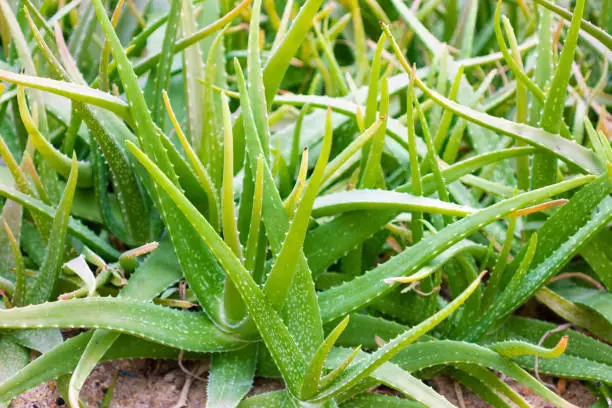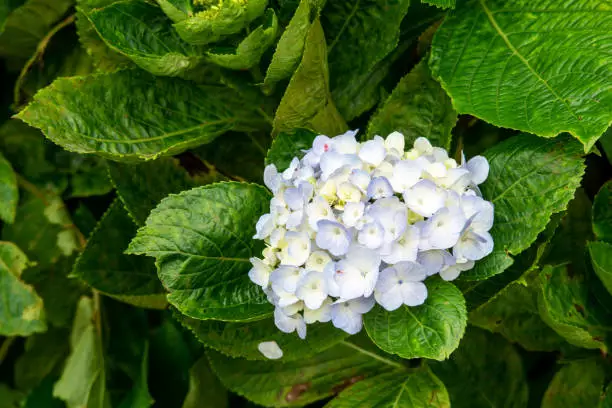Hydrangeas are popular flowering plants known for their vibrant and beautiful blooms. However, it is not uncommon for gardeners to experience challenges when caring for these plants, such as the leaves turning yellow. There are several factors that can cause this undesired color change, and understanding them can help gardeners maintain the optimal health and appearance of their hydrangeas.
One common reason for yellowing leaves is a nutrient deficiency, particularly a lack of nitrogen. Hydrangeas, like other plants, require an adequate supply of essential nutrients to maintain their overall health and vibrant foliage. When there is an insufficient amount of nitrogen in the soil, the leaves may begin to turn yellow as they struggle to photosynthesize properly. Another possible cause is overwatering, which can lead to root rot and the yellowing of leaves. Ensuring proper watering habits and soil drainage can help prevent this issue.
Exposure to environmental stress factors, such as extremes in temperature, sunlight, or soil pH, can also contribute to the yellowing of hydrangea leaves. These plants typically thrive in well-drained, slightly acidic to neutral soil, and they prefer partial shade to prevent sun scorch. By monitoring the plant’s environment and adjusting care as needed, gardeners can address these potential causes and help their hydrangeas maintain their attractive foliage and blooms.
Causes of Yellow Hydrangea Leaves
Nutrient Deficiencies
Yellowing hydrangea leaves can be caused by nutrient deficiencies, particularly those concerning nitrogen, iron, and magnesium. A lack of nutrients or minerals in the soil can result in an overall decline in the plant’s health. When a hydrangea plant suffers from nutrient deficiency, older leaves generally show symptoms first, such as yellowing and green veins. To alleviate this, gardeners can add trace elements and minerals to the soil.
Watering Issues
Both overwatering and underwatering can cause hydrangea leaves to turn yellow. Waterlogged soil deprives the roots of oxygen, leading to root rot and yellow leaves. On the other hand, underwatering or dehydration causes the plant to wilt and its foliage to yellow. Maintaining a consistent watering schedule and ensuring proper drainage through drainage holes or layers can help prevent these issues.
Soil and Drainage Problems
Soil pH, drainage, and water quality play a significant role in the health of hydrangea plants. Hydrangeas prefer moist, well-draining soil with a slightly acidic pH. If the soil is too heavy or contains too much clay, it may become waterlogged and suffocate the plant. In contrast, plants grown in hard water or soils with low acidity can experience difficulty in absorbing essential nutrients, leading to yellow leaves.
Light and Temperature Factors
Hydrangea plants need adequate light and proper temperature conditions to thrive. Too much direct sunlight can scorch the leaves, causing them to yellow and wilt. Conversely, insufficient sunlight can result in weak, leggy plants with yellowing leaves. Ideal light conditions include partial to full sun exposure, depending on the hydrangea species. Additionally, rapid temperature changes or low temperatures can stress the plant and contribute to yellow leaves.
Diseases and Pests
Various fungal diseases, such as root rot, leaf spot, and gray rot, can cause hydrangea leaves to yellow and wilt. Early detection and treatment with appropriate fungicides can help prevent the spread of these fungal diseases. Pests, like aphids and spider mites, can also damage hydrangea plants, leading to yellow leaves and potentially more severe issues if not dealt with promptly.
Other Influencing Factors
Sometimes, yellowing hydrangea leaves are simply a natural part of the plant’s lifecycle, as older leaves naturally change color and fall off to make way for new growth. Additionally, stress caused by repotting or transplanting a hydrangea can result in temporary yellowing as the plant adjusts to its new environment. Ensuring optimal growing conditions and proper care can help minimize external stress factors and promote healthy foliage.
Preventive Measures
Proper Fertilization
To prevent hydrangea leaves from turning yellow, apply the appropriate type and amount of fertilizer. Hydrangeas benefit from a nitrogen-rich fertilizer, which can be sourced from compost or manure. Avoid applying too much fertilizer, as it may lead to leaf discoloration and other issues such as stunted growth.
Watering and Soil Management
Hydrangeas require well-draining soil to prevent their leaves from turning yellow. Incorporating organic matter and mulch around the base of the plant helps to improve soil quality and promote good drainage. Mulching also prevents the soil surface from drying out too quickly, which can cause wilting or drooping. Proper watering is essential to help hydrangeas maintain their vibrant color. It’s important to water hydrangeas consistently, maintaining an evenly moist root zone.
Light and Temperature Control
Leaf yellowing in hydrangeas is often attributed to excessive sunlight or severe temperature fluctuations. Monitor light exposure and protect the plant from direct sunlight during hot summer days to prevent sunburn and leaf scorch. Maintain a consistent temperature around your hydrangeas, particularly during extreme weather conditions.
Disease and Pest Prevention
A proactive approach to disease and pest prevention can decrease the likelihood of hydrangea leaves turning yellow. Keep a close eye on your plants for signs of pests or diseases, such as purple spots or semi-transparent stains on the leaves. Apply a fungicide or other preventative measures to treat underlying issues and maintain plant health.
Iron and Other Supplements
Chlorosis, or yellowing of the leaves, can occur in hydrangeas due to an iron deficiency. To address this issue, apply an iron supplement such as chelated iron or iron chelate to supplement chlorophyll formation, essential for photosynthesis. Magnesium sulfate can also be used to rectify a magnesium deficiency, which can lead to brown tips on the leaves.
Additional Care Tips
Ensure that hydrangeas are planted in a well-formulated potting mix, rich in organic matter, to promote strong root systems and overall plant health. Regularly check the soil acidity, and adjust as needed to maintain the optimal pH level for hydrangeas. With proper care and maintenance, hydrangeas can thrive and retain their vivid, colorful leaves.
Conclusion
Hydrangea leaves turning yellow is a common issue that can be attributed to various factors. One of the primary reasons is improper watering, as hydrangeas require consistently moist soil to thrive. Overwatering or underwatering can lead to yellowing leaves, and it’s essential to maintain a balanced watering routine. Ensuring proper drainage and soil composition can significantly help in preventing this issue.
Nutrient deficiencies also play a vital role in yellowing hydrangea leaves. A lack of essential nutrients like nitrogen, iron, and magnesium can result in foliage discoloration. Regular soil testing and application of appropriate fertilizers can address nutrient imbalances and help hydrangeas regain their vibrant green color. In addition, it’s crucial to follow proper fertilizing guidelines to avoid potential burning of the plant’s roots.
In some cases, yellowing leaves might be a sign of disease or pest infestation. Common culprits include Cercospora leaf spot, powdery mildew, and the presence of pests like aphids or spider mites. Early detection and treatment are key to mitigating the damage caused by these factors. Gardeners should implement proper pruning and sanitation practices to reduce the likelihood of disease and pest issues.
To sum up, to prevent hydrangea leaves from turning yellow, it is essential to establish appropriate watering practices, maintain nutrient-rich soil, and monitor for pest and disease issues. By ensuring these crucial aspects of hydrangea care, gardeners can enjoy their lush, vibrant blooms throughout the growing season.
Frequently Asked Questions
What causes yellowing leaves on hydrangeas?
Yellowing leaves on hydrangeas can occur due to a variety of factors, including insufficient water, poor soil composition, and nutrient deficiencies. It is essential to examine your hydrangea’s growing conditions and make necessary adjustments to ensure its overall health.
Are yellow leaves a sign of overwatering?
Yes, yellow leaves can be a sign of overwatering. Overwatering can lead to root rot, which may cause leaves to turn yellow due to lack of oxygen and nutrients. To avoid overwatering, only water your hydrangea when the top three inches of soil are dry.
Do nutrient deficiencies lead to yellow hydrangea leaves?
Nutrient deficiencies, particularly of iron, nitrogen, and magnesium, can cause hydrangea leaves to turn yellow. To address these deficiencies, it is crucial to test your soil and amend it with the necessary nutrients.
How does pH affect hydrangea leaf color?
The pH of your soil can significantly affect the nutrient availability and color of hydrangea leaves. An acidic pH (below 6.0) may lead to iron and magnesium deficiency, causing yellow leaves. On the other hand, alkaline soil (above 7.0) can cause some nutrients to become unavailable, also leading to yellowing leaves.
Can disease or pests cause hydrangea leaves to turn yellow?
Diseases and pests, such as anthracnose or spider mites, can cause hydrangea leaves to turn yellow. It is essential to monitor your plants for signs of infestation or disease, treating the issue accordingly with organic or chemical methods.
Are environmental factors responsible for yellow leaves on hydrangeas?
Environmental factors such as high temperatures, excessive sunlight, or cold drafts can also lead to yellowing leaves on hydrangeas. Ensure your hydrangea is located in a suitable spot, providing filtered sunlight and protection from extreme temperature fluctuations.



